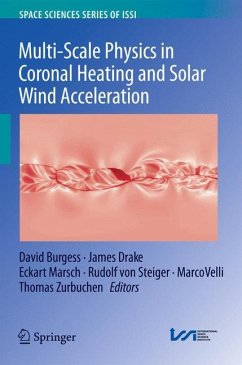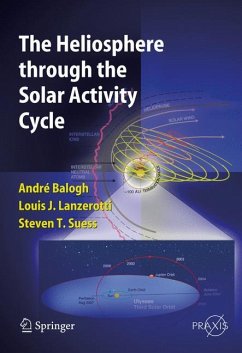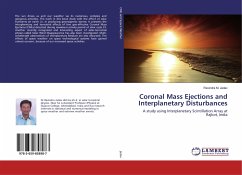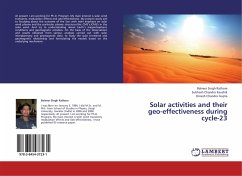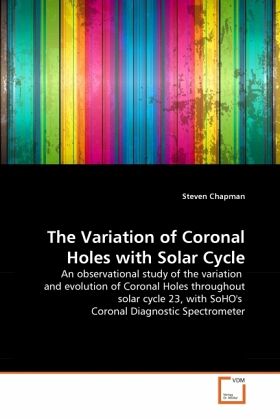
The Variation of Coronal Holes with Solar Cycle
An observational study of the variation and evolution of Coronal Holes throughout solar cycle 23, with SoHO's Coronal Diagnostic Spectrometer
Versandkostenfrei!
Versandfertig in 6-10 Tagen
52,99 €
inkl. MwSt.

PAYBACK Punkte
26 °P sammeln!
Coronal holes are commonly known to be the source of the open magnetic flux and the high-speed solar wind. In EUV and X-ray emission lines, coronal holes are seen as the regions with reduced emission due to lower temperatures and electron density than the surrounding quiet sun. Observing the evolution of coronal holes over the course of a solar cycle, can lead to a greater understanding of the evolution of the solar dynamo and can advance our knowledge in forecasting space weather. Synoptic data from the Normal Incidence Spectrometer (NIS), which is part of the Coronal Diagnostic Spectrometer ...
Coronal holes are commonly known to be the source of the open magnetic flux and the high-speed solar wind. In EUV and X-ray emission lines, coronal holes are seen as the regions with reduced emission due to lower temperatures and electron density than the surrounding quiet sun. Observing the evolution of coronal holes over the course of a solar cycle, can lead to a greater understanding of the evolution of the solar dynamo and can advance our knowledge in forecasting space weather. Synoptic data from the Normal Incidence Spectrometer (NIS), which is part of the Coronal Diagnostic Spectrometer (CDS) onboard the Solar and Heliospheric Observatory (SoHO), have been used in this work to observe the evolution of coronal holes during cycle 23, from mid-1996 through to mid-2007 (solar minimum to solar minimum).




